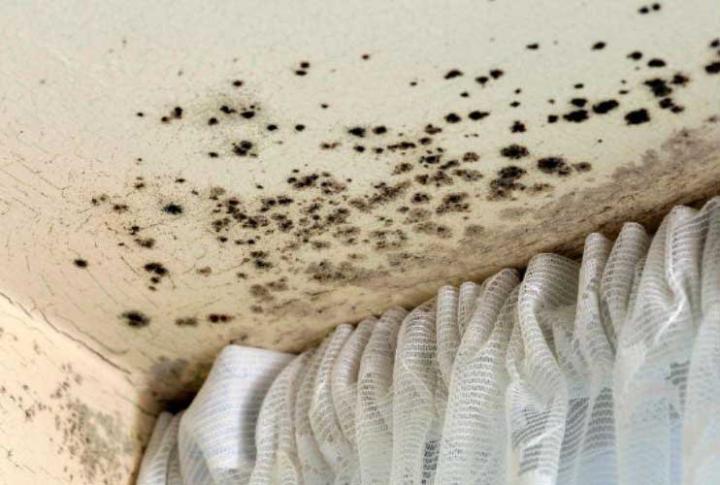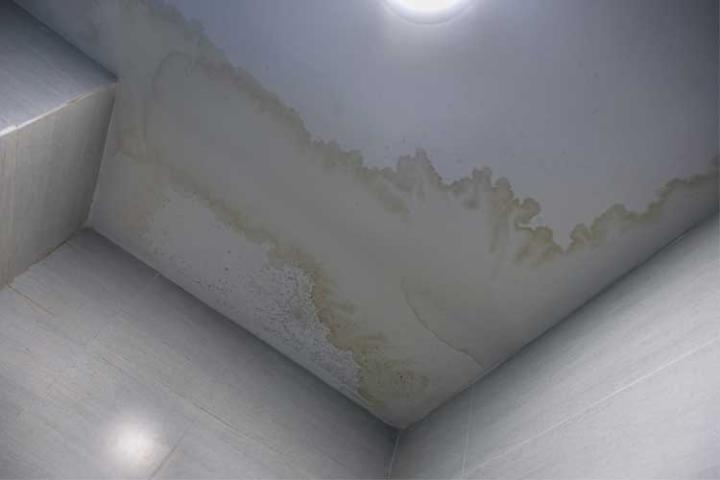One of the main causes of damp and mould is condensation.
Condensation
Every home gets condensation at some time. This usually happens when lots of moisture and steam are being produced - such as at bath times, when a main meal is being cooked or when clothes are being washed. It is quite normal to find your bedroom windows misted up in the morning after a cold night.
Condensation is caused by moisture in the air and mainly occurs during the winter when the weather is colder. Extra water is released into your home through cooking, bathing and drying clothes inside.
When warm moist air comes into contact with colder air, moisture is released as tiny droplets of water. You will often see these on cold surfaces like mirrors and windows - this is condensation.

Other causes of damp
Condensation is not the only cause of damp.
Penetrating damp
Penetrating damp is where damp penetrates through the walls of the building and can usually be seen as an area of 'wet' staining on the wall or ceiling.
This could be from:
- leaking pipes, wastes or overflows
- rain seeping through the roof where a tile or slate is missing, spilling from a blocked gutter or getting in around window frames
Rising damp
Rising damp is where there is a failure in the damp proof course and moisture rises up through the building from the ground. This will only affect the ground floor as moisture cannot rise above 1 metre and will often leave a 'tidemark'.

New homes
If your home is newly built it may be damp because the water used during its construction (for example, in plaster) is still drying out. If your home is damp for any of these reasons it may take weeks of heating and ventilation to dry out. Hiring a dehumidifier will help.
If you are not sure what is causing the damp in your home, start by checking pipes and overflows and under sinks to see if there are any obvious leaks. Have a look outside, too - you may be able to see if there are slates missing from the roof or cracked gutters or rainwater pipes.
How to reduce condensation
Follow these steps to help prevent mould and damp:
- open windows and vents to reduce moisture build up
- try not to put too much stuff into cupboards as this reduces air circulation
- leave space between furniture and walls to allow air to circulate
- keep your home warm - in cold weather it is better to keep your home heated throughout the day at a low level, than to turn the heating on high for short bursts
- avoid using tumble dryers which aren’t externally vented
- dry clothes outside if you can
- if you have to dry clothes inside, make sure you open a window
- when cooking, open windows or use an extractor fan
- keep a lid on saucepans and don’t let the kettle over boil
- don’t use portable gas or paraffin heaters
- close kitchen and bathroom doors to stop moisture reaching other rooms
- install a humidity controlled extractor fan if you can
What to do if you see condensation or mould
If you do spot signs of mould, you should:
- dry windows and sills with paper towels
- remove and kill mould by wiping down surfaces with fungicidal wash
- when decorating, use anti-fungi paint to prevent mould from appearing again
- don’t brush or vacuum the mould as this can cause it to spread
- clean and remove clothes and carpets that have been affected
Insulation and draught proofing
When the whole home is warmer, condensation is less likely.
Consider whether you can:
- insulate your loft - remember to draught proof the loft hatch but do not block the opening under the eaves
- insulate cavity walls - you might need building regulations approval, so talk to your local building inspector before deciding
- install secondary or double glazed windows to reduce heat loss and draughts - but make sure there is some ventilation, for example through trickle vents
- keep low background heating on all day in cold weather - even when there is no one at home
For more information, visit energy efficiency in the home.
Things to avoid
Do not:
- block permanent ventilators
- completely block chimneys - instead, leave a hole about 2 bricks in size and fit a louvered grille over it
- draught proof a room where there is condensation or mould
- draught proof a room where there is a cooker or a fuel burning heater, for example, a gas fire
- draught proof windows in the bathroom or kitchen
More information
Help is available for households who are impacted by rising energy bills through the household support fund.
For tenants of private rented properties where the landlord is not helping, advice is available from the Environmental Health team.
You can contact them by:
- phone: 01344 352000 and ask for the Environmental Health team
- email: environmental.health@bracknell-forest.gov.uk